
Ephedraceae is a family of gymnosperms belonging to Gnetophyta, it contains only a single extant genus, Ephedra, as well as a number of extinct genera from the Early Cretaceous.

Nikolay Mikhaylovich Przhevalsky was a Russian geographer of Polish descent, and a renowned explorer of Central and East Asia.
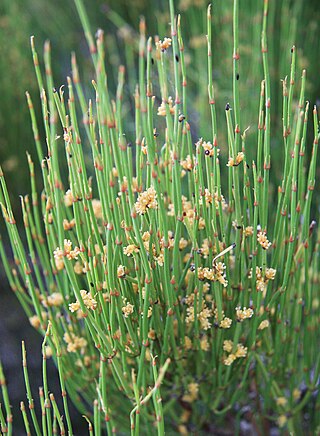
Ephedra is a genus of gymnosperm shrubs. The various species of Ephedra are widespread in many arid regions of the world, ranging across southwestern North America, southern Europe, northern Africa, southwest and central Asia, northern China and western South America. It is the only extant genus in its family, Ephedraceae, and order, Ephedrales, and one of the three living members of the division Gnetophyta alongside Gnetum and Welwitschia.

Otto Stapf FRS was an Austrian born botanist and taxonomist, the son of Joseph Stapf, who worked in the Hallstatt salt-mines. He grew up in Hallstatt and later published about the archaeological plant remains from the Late Bronze- and Iron Age mines that had been uncovered by his father.

Ephedra sinica is a species of Ephedra native to Mongolia, Russia, and northeastern China.
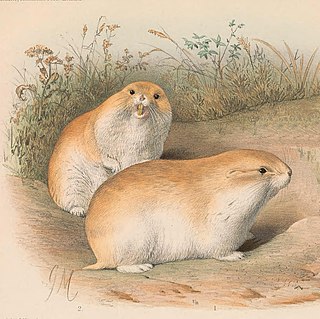
Przewalski's steppe lemming is a species of rodent in the family Cricetidae. It is found in China and Mongolia.

Ligularia przewalskii, also called Przewalski's leopardplant and Przewalski's golden ray, is a species of perennial herbaceous plant in the genus Ligularia and the family Asteraceae, native to damp places in Mongolia and Northern China. Named after the Russian explorer Nikolai Przhevalsky, it used to be called Senecio przewalskiiMaxim.
Ephedra alata is a species of Ephedra. These plants are perennial and xerophytic gymnosperm shrubs.

Ephedra strobilacea is a species of Ephedra that is native to Iran and Central Asia.
Ephedra multiflora is a species of Ephedra that is native to northern Chile and Northwest Argentina.

Ephedra torreyana, with common names Torrey's jointfir or Torrey's Mormon tea, is a species of Ephedra that is native to the deserts and scrublands of the Southwestern United States and to the State of Chihuahua and northern Mexico.
Ephedra holoptera is a species of Ephedra that is native to Iran.
Ephedra lomatolepis is a species of Ephedra that is native to Kazakhstan, Mongolia, Xinjiang in China, and Tuva in Siberia.
Ephedra boelckei is a species of Ephedra that is native to Argentina.

Ephedra altissima is a species of Ephedra that is native to the western Sahara, and also to the Canary Islands.
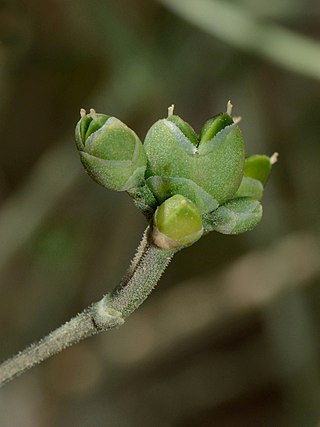
Ephedra foliata is a species of gymnosperm in the Ephedraceae family. It is referred to by the common name shrubby horsetail. It is native to North Africa, and Southwest Asia, from Morocco and Mauritania east to Turkmenistan, Pakistan, and Punjab State in India.
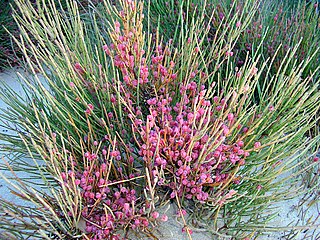
Ephedra fragilis, commonly named the joint pine, is a species of Ephedra that is native to the western Mediterranean region of southern Europe and Northern Africa, and from Madeira and the Canary Islands in the Atlantic.
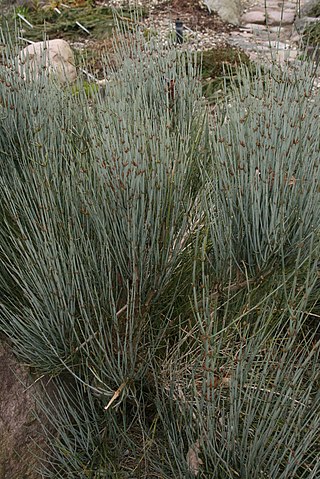
Ephedra intermedia, with the Chinese common name of Zhong Ma Huang, is a species of Ephedra that is native to Siberia, Central Asia, Iran, Afghanistan, Pakistan, the western Himalayas, Tibet, Mongolia, and China.
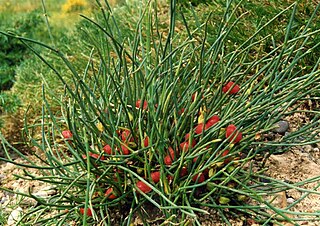
Ephedra monosperma, also called Ephedra minima or dan zi ma huang, is small shrub in the family of Ephedraceae.
Ephedra rhytidosperma, synonym Ephedra lepidosperma, common name li jiang ma huang, is a shrub native to North-central China, Inner Mongolia and Mongolia. It grows in mountainous areas at an elevation of 2300–4200 m.














